Kluski, Makaron Jajeczny
Homemade Kluski Egg Noodles
How to pronounce it?
clue-ski | maca-RON yaye-tschny
‘Play’ to hear:
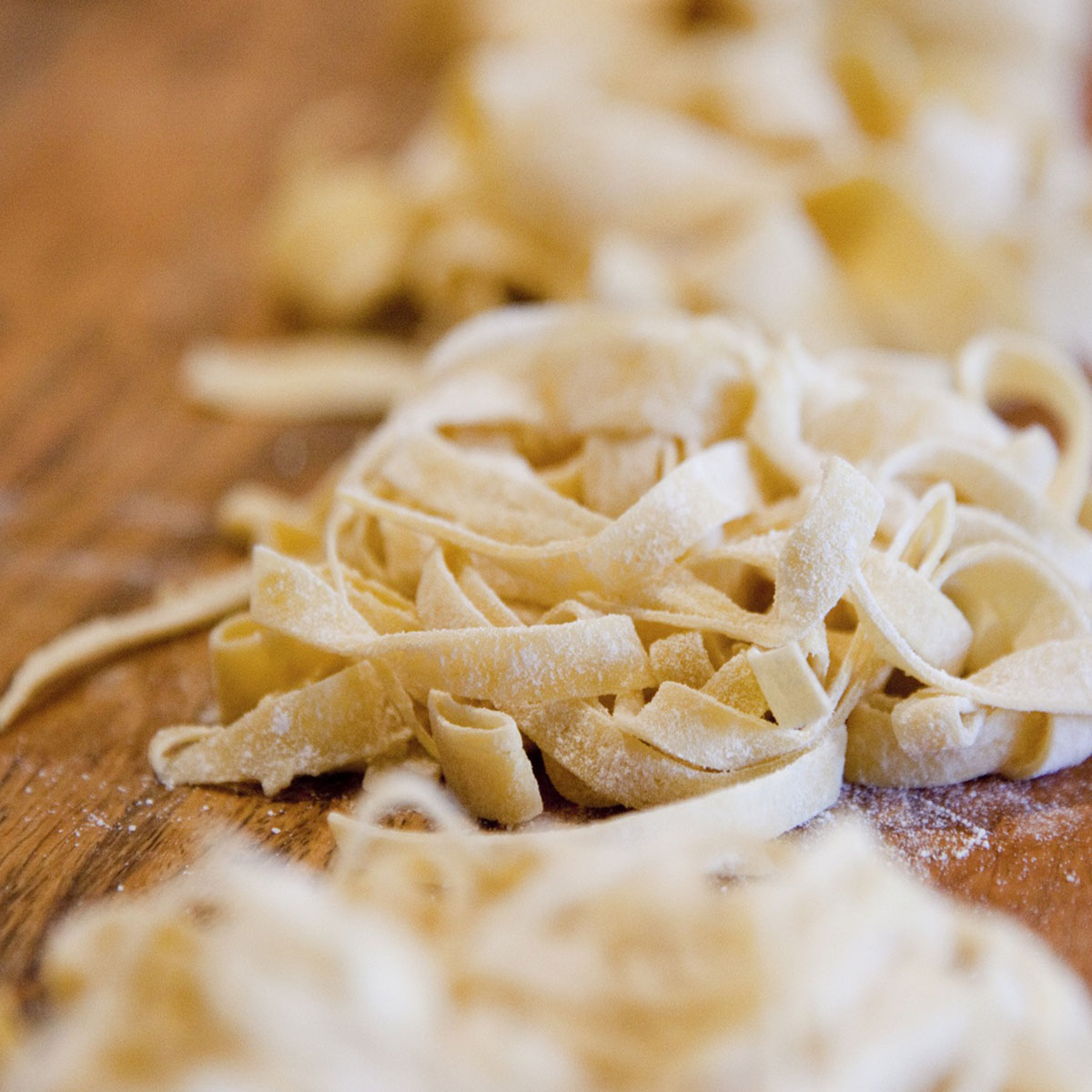
Kluski Noodles (already plural) are Polish-style egg pasta. They’re made from an unleavened dough of wheat flour, mixed with eggs; then cooked by boiling. These noodles are traditionally served in an array of Polish soups.
This recipe makes just under 1 lb (400-450 g) of cooked Kluski Egg Noodles. That’s not a lot, but enough to accompany four plates of soup. Feel free to multiply this recipe if you have more diners to feed.
For the full list of ingredients & detailed instructions, please see the recipe card at the end of this post. But before you scroll, there’s important stuff to know below.
The term ‘Kluski Noodles’ is used mostly among the Polish diaspora. In Poland, we call them ‘Makaron Jajeczny’ (literally: egg pasta), so look out for that name when shopping in Poland.
In fact, the term ‘kluski’ is reserved for something else. ‘Kluski’ is a generic name for all soft dumplings, mostly those without filling (such as Silesian ‘kluski’; kopytka, leniwe, pyzy). Occasionally, we do refer to all noodles (even Italian pasta) as ‘kluski’; but that’s an informal speech.
Ready-made egg noodles are available in stores in Poland and abroad; mostly in dried form. They’re convenient, quick and easy to cook.
But if you have time – I really encourage you to make Kluski Noodles from scratch. They’re rich, comforting and soft. Fresh eggs make all the difference!
Do you need any special ingredients to make these Kluski Egg Noodles?
No, all the ingredients should be available in any grocery store.
The recipe lists regular all-purpose flour, but if you can get your hands on “00” flour (also known as ‘pasta flour’) – use it instead.
Equipment-wise, you’ll need a large cutting board (ideally pasta / pastry board), rolling pin, sharp knife and a large cooking pot (I use 3 qt / 3 litre pot). A stand mixer and pasta maker are optional, but they make the process easier.
How could you serve with these Polish-style Kluski Noodles?
These Egg Noodles are traditionally served in soups, such as Rosół, Pomidorowa (Tomato Soup), fruit soups (e.g. Strawberry Soup) and more.
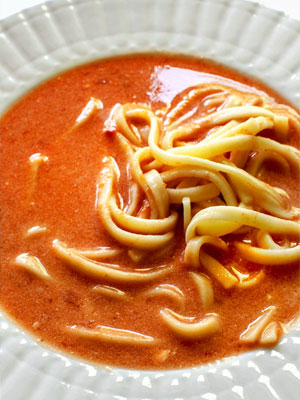
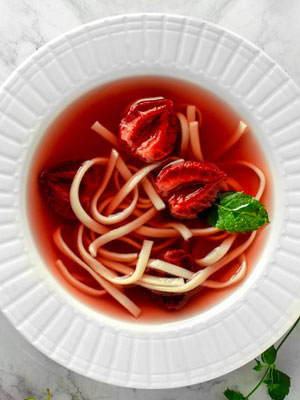
Alternatively, treat them the same way as pasta. Add some sauce, some cheese, a handful of herbs – and you’re done.
Can you make Kluski Noodles another way?
Yes, you can. You can reduce the amount of eggs and add some water instead.
In general, the more yolks you add, the richer the noodles become. In Poland, we name these noodles according to the number of eggs added. For example, we’ve got:
- ‘dwujajeczny’ – literally: ‘two-egged’, with two eggs per 1 kg (2.2 lb) of flour
- ‘czterojajeczny’ – literally: ‘four-egged’, with four eggs per 1 kg (2.2 lb) of flour
And so on. (sorry for the “egged” word, it probably doesn’t exist, but you get my point).
In this recipe, we’ve got 10 egg yolks and 5 whole eggs per 1 kg (2.2 lb) of flour. I’m guessing that makes it 15-egged? You can safely reduce the number of eggs if you prefer.
Moreover, some homecooks add a solid pinch of smoked paprika to the mix – just to add a bit of colour.
What diets are these Kluski Noodles suitable for?
These Noodles are meat-free and are suitable for ovo-vegetarians.
How to store these Kluski?
Once served, don’t keep them out (at room temperature) for more than 3 hours.
You can store any leftovers in the refrigerator. Add a spoonful of oil and place them in a container with a lid. Aim to consume within 3 days.
Storing raw noodles: Kluski Noodles can also be stored before cooking (for up to 2 days). Just spread them on your work surface and leave to dry for an hour. Then dust the noodles with a little bit of flour and place them in a container with a lid (a food-friendly zip bag works too). Chill in the refrigerator until you’re ready to cook them.
Can I freeze Kluski Noodles?
I wouldn’t recommend freezing Kluski Noodles that were already cooked. But you can freeze them raw:
Once you cut all the raw noodles and dusted them with flour, move them into a freezer-friendly bag. Label the bag with a date and a description, and place it in the freezer. Aim consume within 2-3 months.
How do I reheat these Kluski?
From chilled: If they were cooked before (meaning: they’re leftover noodles), there’s no need to reheat them. Simply drop them directly into a hot soup – they will warm up on their own.
From frozen: Allow the noodles to thaw overnight. Then reheat them by dropping in boiling water for a few seconds or by dropping them directly into a piping hot soup.
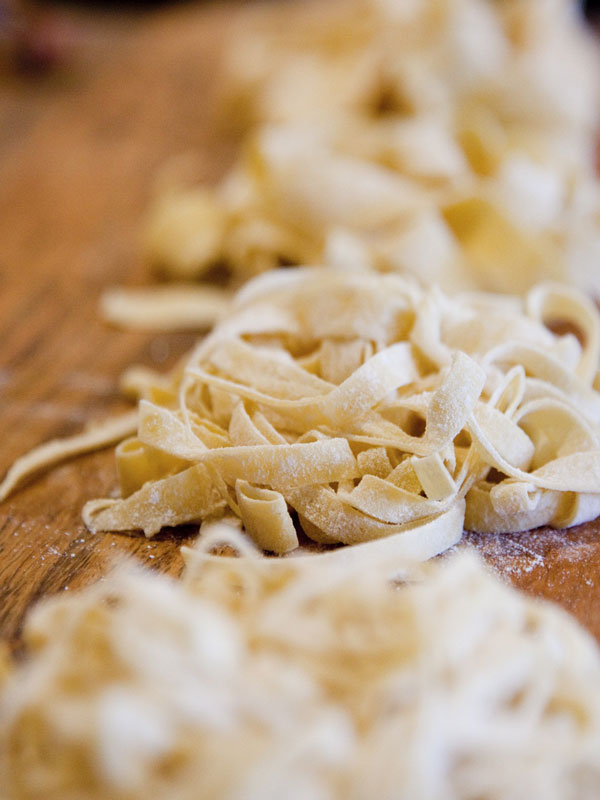
Kluski Egg Noodles (Polish-style Pasta for Soups)
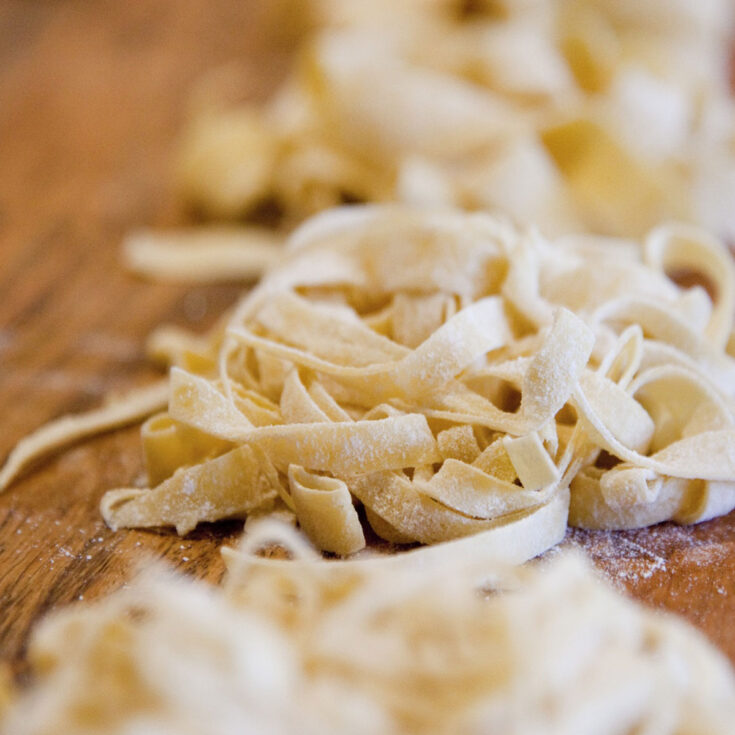
Store-bought Kluski Noodles are a great addition for a weeknight Rosół soup, but have you ever tried them homemade?
The difference is substantial: When done well, from-scratch, Kluski Noodles are so rich and light that they basically melt in your mouth.
Ingredients
- 1½ cup (6.3 oz, 180 g) all-purpose flour
- 1 medium egg, whole
- 2 egg yolks, medium
- ⅓ tsp salt
- 1 tbsp clarified butter; substitute for canola or olive oil
Instructions
- In a large bowl, whisk flour and salt together. Make a well in the center.
- Fill the well with a whole egg and 2 egg yolks.
- Add a tablespoon of fat. I like to add clarified butter for recipes like these, but you can replace it with any other fat (such as canola or olive oil).
- Combine all the ingredients with a fork. As soon a soft ball forms, pull the dough off the fork.
- Start kneading the dough by hand. It takes a while to turn smooth and elastic: depending on the size of the eggs, anywhere between 20 minutes up to an hour (that’s an extreme end). It took me around 25-30 minutes, but I watched my favourite show as I was kneading. :-D
- If you prefer to use a stand mixer (with a dough hook), simply hold back a tiny bit of flour and only add it when necessary. If the dough appears too dry, add a spoonful of water. Observe the dough, after 20 minutes it should be well kneaded.
- Form a ball and wrap it in cling film. Place it in the fridge and let it rest for a minimum of an hour (and a maximum of a day).
- Set out a large area to work in. If you have a pasta / pastry board, use it. Dust it with some flour.
- Take the dough out of the fridge and cut it into 3 pieces. Take one piece and cover the rest with the foil (don’t let them dry out).
- Place that chosen piece of dough onto the work surface and roll it out. Roll it out as thinly as possible. I use a rolling pin so it takes a few minutes, but if you have a pasta maker - feel free to use it.
- Roll this thin pancake into, well...a roll, and slice this roll into noodles with a very sharp knife. [The width of my kluski noodles was about 0.5 inch (1.25 mm)]. Place the sliced noodles into a bowl and sprinkle them lightly with flour.
- Repeat with the other pieces of dough.
- It’s worth picking up the noodles you’re already made, and moving them around. That will let noodles dry and will prevent them from sticking.
- Noodles are ready to be cooked. If you prefer to cook them later, here are your options:
- If you’re planning to cook them within the next two days, just spread the raw noodles on your work space and let them dry for an hour. Then dust them with a little bit of flour and place them in a container with a lid (a zip food bag works too). Chill in the fridge until you’re ready to cook your kluski noodles.
- If you’re planning to cook these noodles even later, freeze them instead. Just move them into a freezer-friendly bag, label it with the date and description and place it in the freezer. Consume within 2-3 months.
- Are you hungry now? Great, let’s cook kluski noodles straight away. Boil a large pot of water (I use the size of 3 quarts / 3 litres). Add a teaspoon of salt into it, then throw all of the noodles in.
- Stir a little and reduce the heat, so that the water boils gently. Once the noodles start to float (it took 3 minutes in my case), they’re cooked. The exact cooking time will depend on how thick your noodles are and how wide the cut was. It’s best to test them empirically, by having a bite. If a noodle is pleasantly soft (yet still firm) - that’s the time to drain them all in a colander.
- Serve these kluski noodles in a soup of your choice (e.g. Rosół, Pomidorowa) or treat it just like a regular pasta - add some sauce, cheese, herbs and spices.
Notes
- For this recipe, I encourage you to use the scales.
Polonist is reader-supported. When you buy through links on our site, we may earn a small affiliate commission. Learn more
Recipe Information
Filed under:
Alternative traditional/regional names:
Also known / Misspelt internationally as:
Tested by:
First published on:
Recipe by / Adapted from:
Story by:
Bibliography / References: